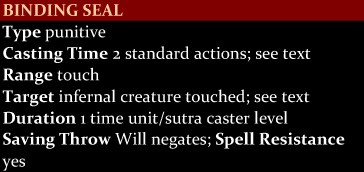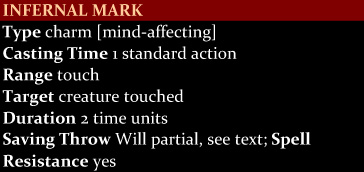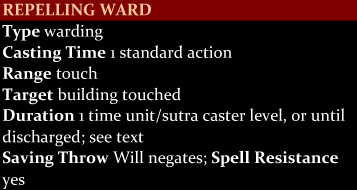Obscure Sutras
Hello, everyone. A few weeks ago, a challenge was issued to third-party publishers of the Pathfinder system to make use of another third-party publisher’s material in their upcoming work. The reasoning behind the challenge was that the OGL allows for, and seems to envision, a wonderful world wherein third-party publishers all build upon and work with one another’s content to create a beautiful and intricate web of content for players which is interconnected, and where products from different publishers “play nice” with one another, but instead third-party publishers ignore each other and often produce several different approaches to the same thing, which wind up not only incompatible but in direct competition. Or something to that effect. The phrase “reinvent the wheel” came up. You can take a look at the challenge here.
We here at Necromancers of the Northwest thought that that was a cool idea, and wanted to support this vision of paradise, but were afraid that creating an actual product that was dependent on another company’s product would be received poorly, in that no one wants to buy a book only to find out they can’t use it without another, separate book (we also try pretty hard to avoid making books that require other books made by us, for the same reason. For example, even Marchen der Daemonwulf II and Spirit Warriors II, direct sequels to books we made, can be used without the original book, if necessary). So, we decided to devote a theme week of articles to it, instead, since articles are free, and you won’t feel cheated if you never get to use today’s content (or, at least, hopefully not too cheated).
We settled on a book called Sutra Magic by Rite Publishing, which produces a new approach to magic, in the form of oriental-themed sutras. As a result, every single article this week deals with sutra magic in some way, shape, or form.
Today we’ll be taking a break from the usual allotment of new spells in order to provide you with some new sutras, which I’m sure you’ll find function a lot like spells. Sutra Magic, which, to my knowledge, is currently the only source of sutras, contains 17 sutras. Today’s article will bring that number up to 20.
But first, several of the abilities included in the following archetypes reference concepts introduced in Sutra Magic by Rite Publishing. If you find yourself uncertain of what an “infernal creature” is, or what the different types of ofudas refer to, you’ll need to take a look at this book, which can be found here, for (at the time of this writing) $2.99.
Binding Seal

Casting this sutra requires 2 separate ofuda and two standard actions, which must be taken within one minute of each other. First, one of the ofuda must be placed upon a natural object (such as a tree or stone), which is to serve as a prison for the spell’s target (this is one of the two standard actions to cast the ofuda). Then, the second ofuda must be placed upon the forehead of an infernal creature (creatures of the aberration, fey, outsider and undead type, as well as those of the goblinoid and incorporeal subtypes). Placing the second ofuda on the infernal’s forehead requires a melee touch attack, which provokes attacks of opportunity (this is part of the second standard action to cast the ofuda).
The target is then imprisoned for the sutra’s duration within the natural object that was touched as part of casting the sutra. While imprisoned within the object, the affected infernal is considered to be in a state of temporal stasis and cannot be further harmed or affected in any way. Destroying the vessel which serves as the infernal’s prison frees the infernal, unharmed.
If you have a sutra caster level of 12 or higher, you can also bind the infernal to defend the object it is bound to, temporarily freeing it from its prison (and the state of temporal stasis). At any time during the spell’s duration, as a standard action you may command the target infernal to protect the area around the object to which it is imprisoned. You must be within 60 feet of the object to which the infernal is bound in order to use this ability. Ordering the target to defend the object allows it to leave its prison, but it has no will of its own, and attacks any other infernals and any creatures whose alignment opposes your own. The target cannot move more than 60 ft. from the object it is bound to while defending the object in this way. Once there are no creatures for the target to attack, he returns to his state of suspended animation within the object he is bound to.
This sutra can be made permanent with a permanency spell. Doing so requires a caster level of 11 and 5,000 gp. If the sutra is made permanent, the imprisoned infernal receives a new saving throw each week to escape from its prison.
Infernal Mark

This is a forbidden sutra which warps and corrupts the soul of the target, causing him to become something unnatural. For the sutra’s duration, the target gains a profane bonus to attack and damage rolls equal to the sutra’s effective spell level, and is considered an infernal for the purposes of being affected by sutras. This sutra also warps the target’s mind with supernatural hatred, and he must succeed on a Will save or become fueled by an all-consuming hatred of natural things. If the target fails its saving throw, he loses all control and immediately attempts to slay all non-infernal creatures he encounters for the sutra’s duration.
Repelling Ward

The power of this sutra creates an invisible barrier which repulses infernals from entering the target building. An ofuda inscribed with this sutra is placed upon the door of the target building, and for the sutra’s duration, any infernal attempting to enter the building is unable to do so unless it succeeds on a Will save (or resists the spell with spell resistance, if applicable). This includes methods of entry besides the door, such as windows or secret passages. It also repels incorporeal creatures attempting to pass through the building’s walls, as well as attempts to teleport directly into the building.
If your sutra caster level is 10 or higher, infernals that fail their saving throw are also compelled to flee the vicinity, and must do nothing but move away from the building until they are at least 500 feet from the target building.
If your sutra caster level is 15 or higher, the invisible barrier expands at your discretion, making it impossible for infernals to come within a radius of up to 1 mile of the warded structure unless they succeed on a Will save. This Will save is in addition to the saving throw required to enter the building itself. Creatures already within this radius at the time that the sutra is cast are not affected.
If your sutra caster level is 20 or higher, you may also choose to ward the building against one additional creature type or subtype (such as animal, plant, elf, dwarf, and so on). Creatures of the chosen type or subtype are affected by the sutra as though they were infernals. The type or subtype of creature must be chosen at the time that the sutra is cast, and cannot later be changed.
Regardless of the sutra’s duration and your sutra caster level, the sutra’s power fades over time, and is discharged once it has affected 1 creature per point of your primary sutra casting ability score modifier (typically Wisdom).


